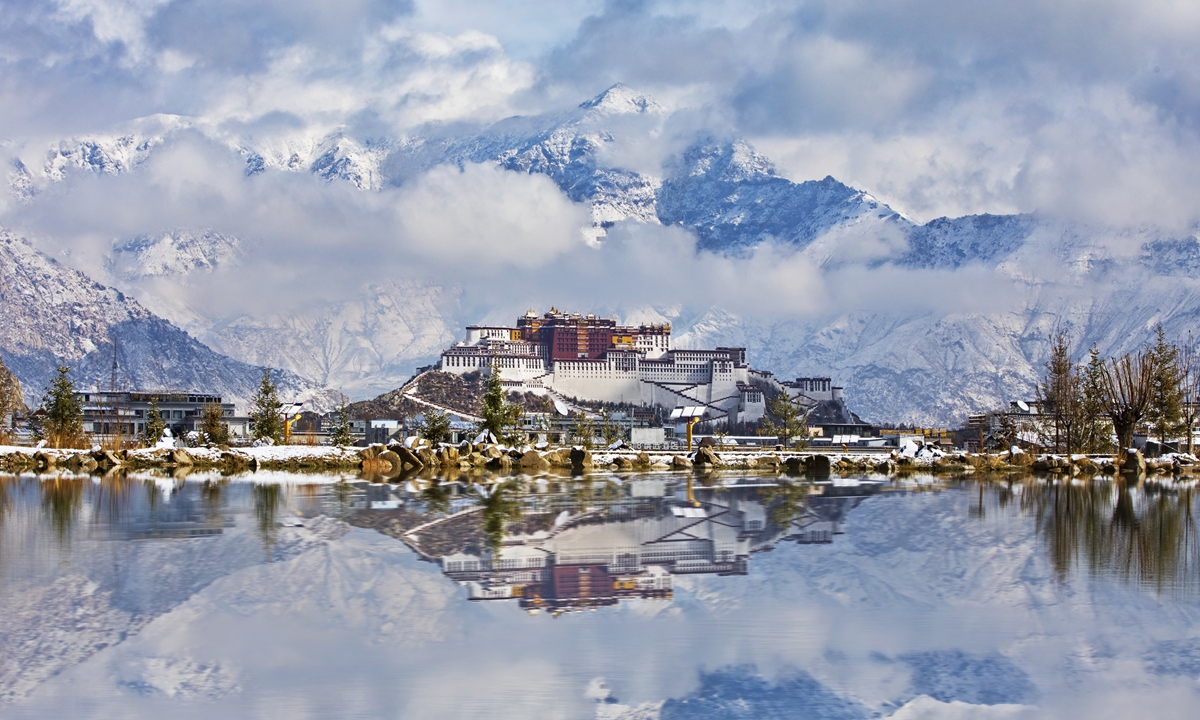SOURCE / INDUSTRIES
Recovery speed of Tibet’s tourism industry topped China’s provinces

The Potala Palace in Lhasa, Southwest China's Tibet Autonomous Region was inscribed to the UNESCO World Heritage List in 1994. Photo: IC
Tibet Autonomous Region's tourism industry has recovered 98 percent when compared with the same period in 2019. The recovery speed of Tibet's tourism industry is ahead of all parts of China, the China Daily reported on Thursday.
According to data provided by travel platform Ctrip, in the first half of 2019, the recovery speed of tourism market in Tibet ranked number one nationwide. Over the latter half of 2019, especially for the September and October, the recovery both achieved positive increase of 15.44 percent and 20.34 percent respectively.
Tourists from other provinces account for 65.92 percent of all tourists with the majority arriving from Sichuan, Guangdong, Shanghai and Beijing. Lhasastill remains the most popular city in Tibet. Rikaze and Linzhi ranked number two and three among the cities.
Data shows that Tibet has received 34,988,000 domestic and foreign tourists, generating 35.827 billion yuan ($5.48 billion) tourism income by November 2020.
During the 13th Five-Year Plan (2016-2020) period, the growth rate of Tibet's local GDP, per capita GDP and per capita DPI (disposable income) of the residents all exceed the national average.
Absolute poverty in Tibet has now has been eliminated, Xinhua News Agency reported.
As of the end of October 2020, the central government had invested 313.6 billion yuan ($48.02 billion) in Tibetan Autonomous Region during the 13th Five-Year Plan period, which is 17.3 percent above what was budged. The investment includes a new electricity network of 7.4 billion yuan and other basic infrastructure aimed at boosting living standards of local Tiebtans.
During the five years, transportation infrastructure in Tibet was constantly improved. There are now 120 air routes connecting Tibet to overseas countries, while the construction of Sichuan-Tibet Railway set a new milestone for the region's development. Lhasa to Linzhi section of track was almost completed and Linzhi to Ya'an track started construction in November.
Investment in public services also boosted local development. Installed power capacity reached 4.018 million kilowatts, an increase of 1.52 million kilowatts over 2015, 4G network and internet fiber now covers all of Tibet's 685 villages and cities.
The number of beds in medical and health institutions per 1,000 people in Tibet is 4.87, an increase of 0.54 from 2015. There are 1,109 square meters of public cultural facilities per 10,000 people. The treatment rate of urban waste and garbage in Tibet reached 91.38 percent.



